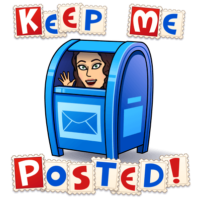
In the midst of physical school closures, students and educators alike are isolated from one another…many restricted from entering their classrooms as they have been forced into a work/learn from home environment for the sake of safety. During this time of uncertainty, connection is more important than ever before. It has been argued that our society is facing collective trauma, each of us facing a sudden alteration of lifestyle and an unknown future. Trauma affects our brain, fueling emotions from the amygdala and lessening our cognitive/problem solving abilities. But there is good news. Routine, familiarity, and connection with others can serve to repair this damage.
But how do we collaborate from a distance? Without being in the physical presence of our colleagues and students, how might we continue to build relationships?
Fortunately, this quarantine has occurred during a time in which technology can be leveraged to maintain connection. This is not to say that it can replace or supersede the power of in person communication. That being said, it is vital we utilize technological tools mixed with non-tech methods to support each other and our students in a time that many are wrought with loneliness and feelings of disconnectedness.
Tips for Varied Methods of Connecting from a Distance (Tech and Non-Tech)

Synchronous Video Calls – Zoom and Google Meet have proven to be useful platforms for educators and students to connect at a set time. Begin with a social-emotional check-in before moving on to academic matters. For those that are able to join using these methods, maximize the time by keeping groups small to allow for deeper conversations. Prepare a set of open ended questions that spark communication. Realize that it may be difficult for all parties to join the meeting due to caretaking younger children, sharing devices across families, or other challenges. As such be sure to also provide asynchronous options as shown below.

Asynchronous Video – Educators can connect with students via YouTube. Click here to view blogpost with tips for being a Teacher YouTuber. But we can also leverage safe video platforms to foster student collaboration with each other. Flipgrid is a great place for students and/or educators to connect with each other in a safe place. The platform feels like social media, complete with filters, stickers, and selfies. Even better, accessibility tools are built in for translation, text to speech, and more! Social media itself can be used as well. Facebook groups can be restricted to only those approved to join. Members can communicate by text, but also via uploading videos or utilizing live video features. The key to these methods is that individuals can collaborate and connect at the time that works best for them.
Snail Mail – When I was 8 years old, a friend and classmate of mine moved to Japan. At this time, there was no internet. No video calls, no social media. And so we kept in touch via paper mail. Every time I received a letter from my friend, I felt more connected than the day before. Today, snail mail is even more rare, and therefore has more impact. Consider sending a quick note to your students and or colleagues. I received a handwritten thank you note from my supervisor a few weeks ago. This was much more touching and memorable than an email. The note is a physical encouragement that I am making a difference. Send a note, include some stickers or a photo! Invite them to respond with a letter addressed to the school, c/o your name. We often underestimate the power of handwritten communication. Letters are personal.
We are humans, social beings. We are better together and thrive on connections with each other. While we may not have the benefit of in person conversations, we can leverage video and written communication to foster relationships.

Like!! I blog quite often and I genuinely thank you for your information. The article has truly peaked my interest.
Thank you for taking the time to comment 🙂